Atypical bacteria and the blurry frontiers between pathogens and symbionts
Published in Microbiology and Plant Science

Legume-rhizobium symbiosis allows legumes to grow on soils poor in nitrogen and thus in absence of expensive and polluting nitrogen fertilizers. This symbiosis takes place within a dedicated root symbiotic organ called the nodule that is colonized by nitrogen-fixing bacteria (rhizobia) that convert the dinitrogen gas (N2) into ammonium (NH4+), a form of nitrogen directly usable by the plant. The symbiotic organ colonization requires a coordinated signaling between the plant and bacteria to synchronize the infection process and the development of the nodule. Furthermore, plant immunity plays a crucial role during the different steps of the symbiotic interaction and might help controlling the infection by undesirable inefficient partners or pathogens (Gourion et al., 2021).
In nature, bacteria unable to induce nodule formation and/or to fix nitrogen can be isolated from legume nodules however their roles are largely misunderstood. They can be opportunistic bacteria taking advantage of a nutrient rich niche or have beneficial effects on plants by improving plant growth, improving tolerance to heavy metal or by producing antimicrobial compounds to compete with other bacteria within the nodule (Flores-Duarte et al., 2022a; 2022b; Hansen et al., 2020).
With the aim to deeper investigate the roles of such non-nodulating / non-fixing endophytic bacteria residing within legume nodules and with the aim to study the regulation of symbiotic immunity, we decided to isolate endophytic bacteria from Medicago nodules. To do so, we inoculated plants with garden soil collected in France in 2016 (Figure 1) and isolated bacteria from the inside of nodules. Amongst the bacteria isolated, we identified an atypical strain having versatile interactions with its host Medicago: parasitic, pseudo-mutualist and endophytic (Figure 2). The behavior of this bacterial strain was completely unexpected and distinct from that of already known nodule endophytes. Its originality (unknown to the legume symbiosis specialists) pushed us to continue the study of this microorganism (Magne et al., 2024).
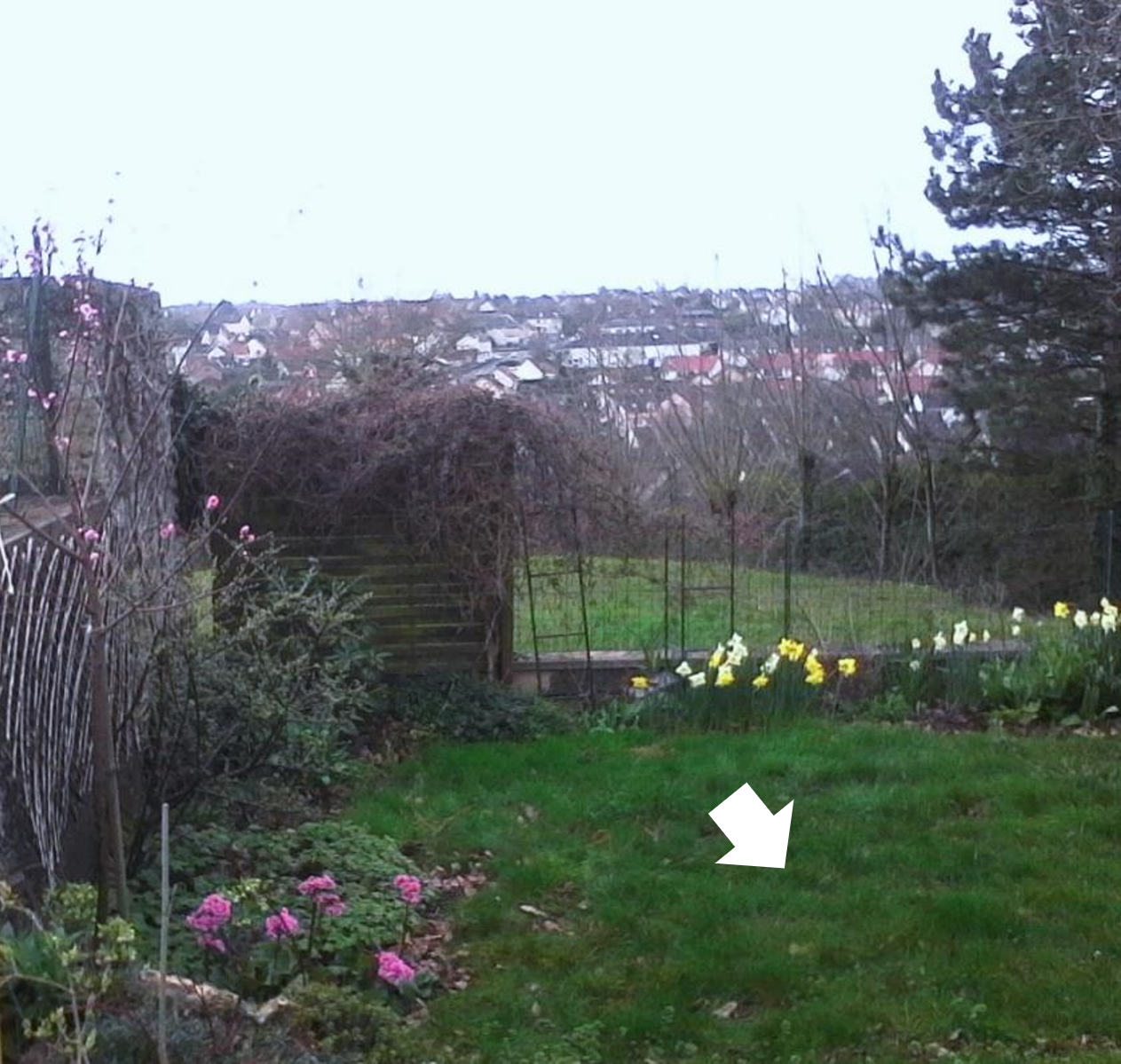
Figure 1. The spot where the soil was collected.
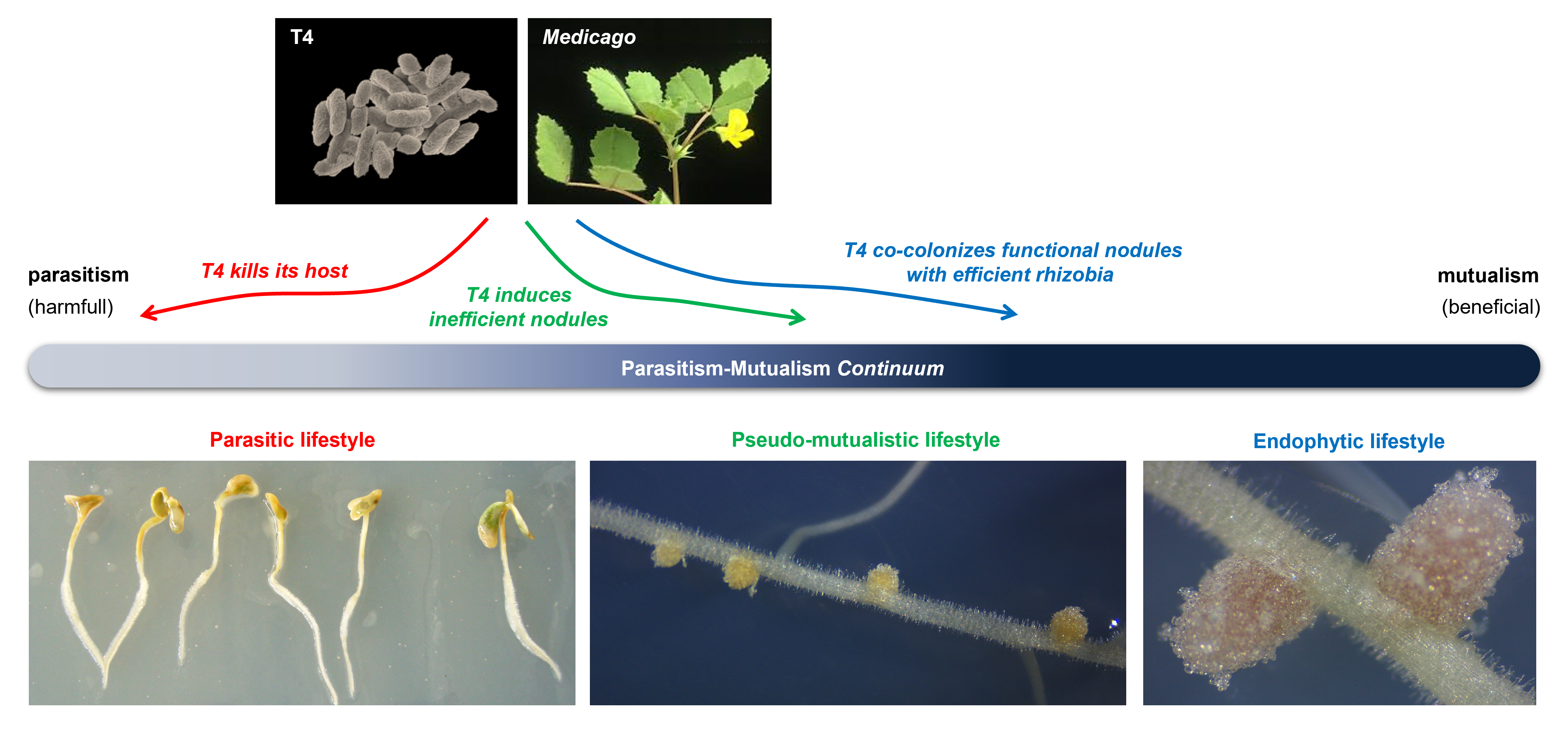
Figure 2. T4 can adopt three differents type of interaction with its host Medicago
This atypical isolate belongs to the Ensifer adhaerens species and represented the fourth strain isolated from nodules of Medicago plants inoculated with soil. In French, “terre” means “soil” and the strain was thus called Ensifer adhaerens T4. The T4 strain can co-colonize functional nodules with an efficient rhizobium (Sinorhizobium medicae) and behaves as a cheating endophyte (Figure 3). In addition, T4 can induce the formation of inefficient (fix-) nodules by its own in which early senescence and defense reactions are induced (Figure 4). More surprisingly, the T4 strain was also able to kill the plant when inoculated on germinating seedlings (Figure 5). The outcome of the interaction, pathogenic versus nodulation, depends on the age of the plant at the time of infection. The pathogenic behavior is taking place on germinating seedlings but inoculation on 3-day-old seedlings or older plants results in the nodulation of the host.
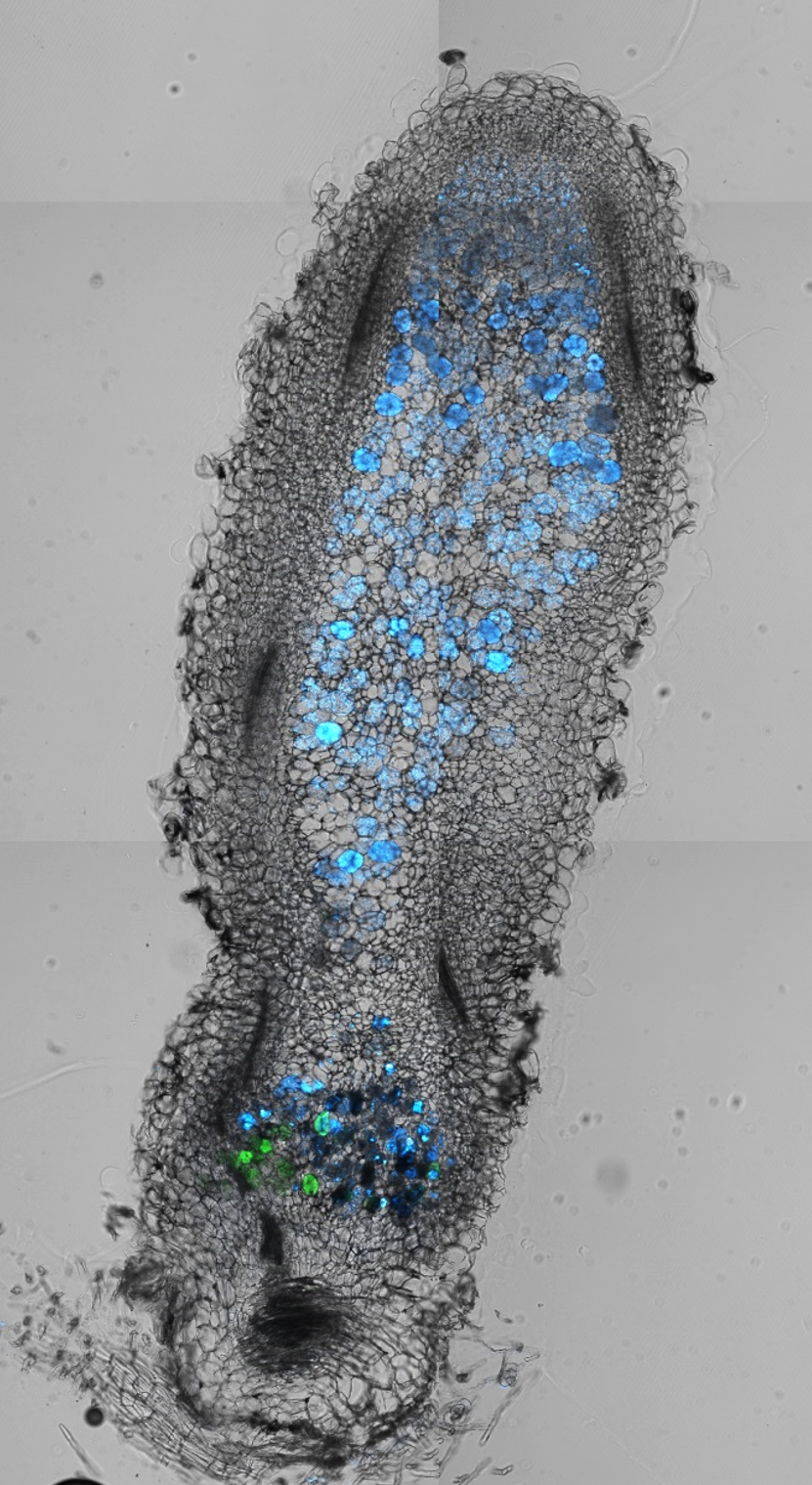
Figure 3. T4 (green signal) and Sinorhizobium medicae (blue signal) co-infection in a Medicago nodules
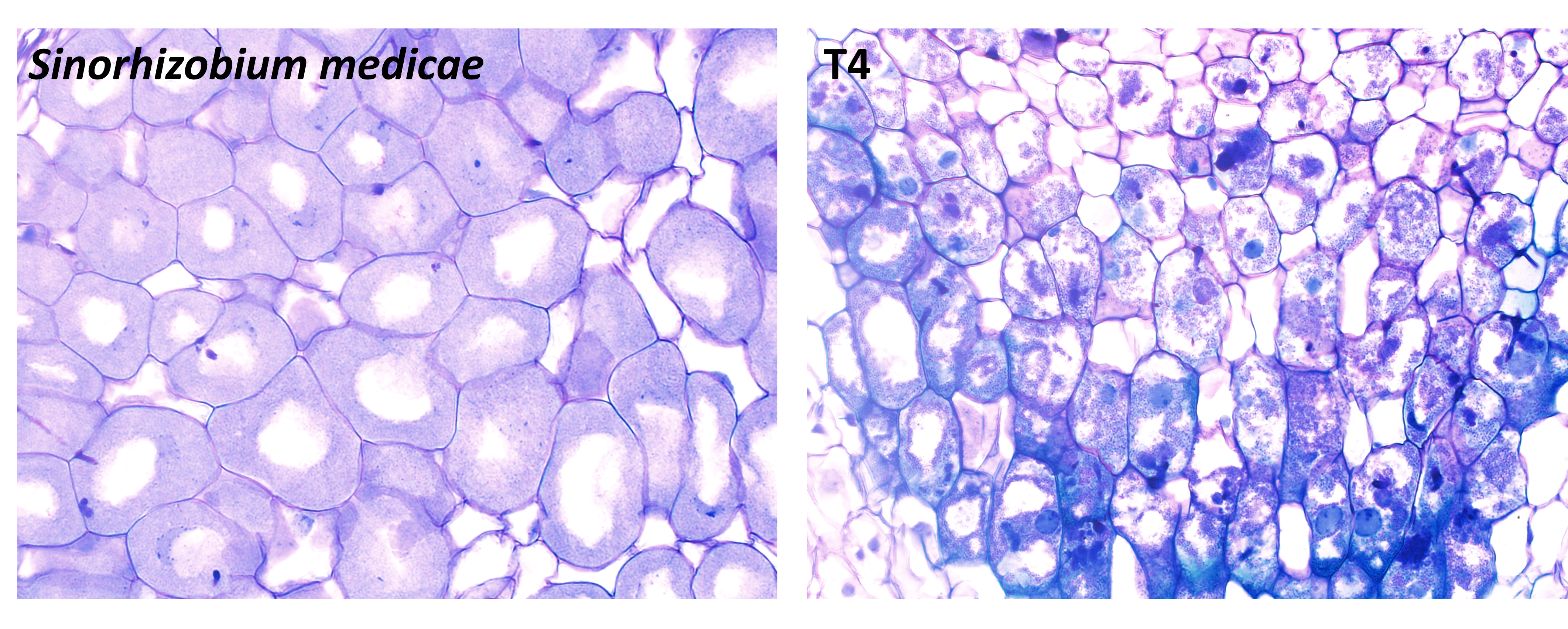
Figure 4. Healthy nodule infected cells densely filled with Sinorhizobium medicae (left) and degenerating T4 nodule infected cells (right).
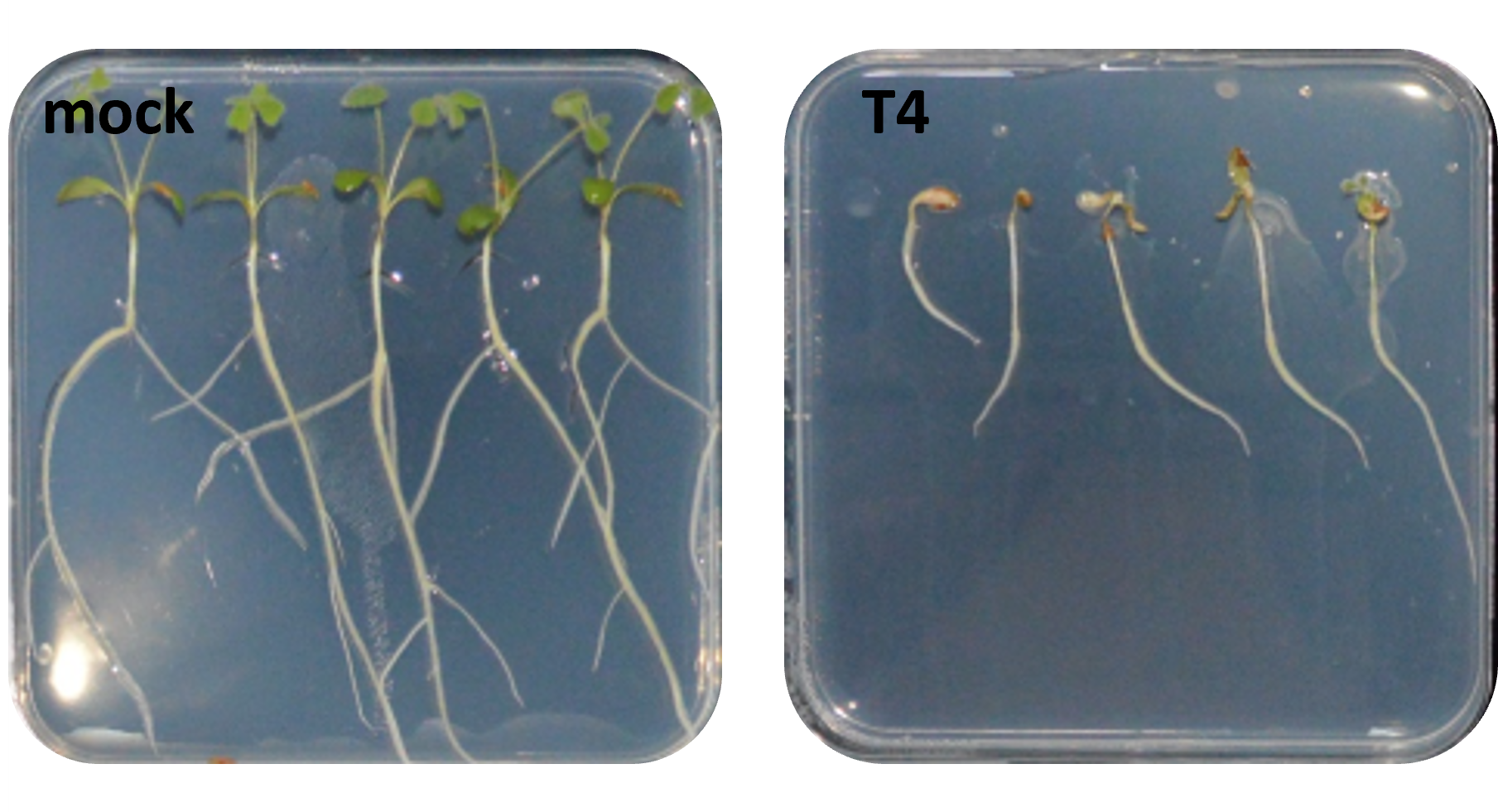
Figure 5. Young seedlings are killed upon T4 inoculation
This dual nodulation/pathogenic behavior was not restricted to Medicago and other species from the Inverted Repeat Lacking Clade (IRLC) were hosts for T4.
We also found that T4 strain was closely related to the known E. adhaerens T173 (Bromfield et al., 2010). This strain was isolated from another host, sweet clover (Melilotus albus) in Canada (Figure 6) and we reported that T173 also shares the dual nodulation/pathogenic feature. This suggests that this atypical behavior might be found in other bacteria and in other legumes.
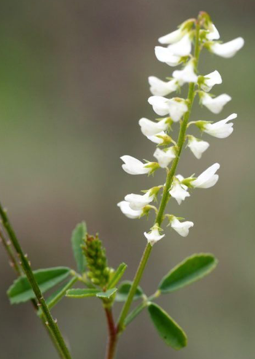
Figure 6. Sweet clover
(https://www.wildflowersprovence.fr/plant/melilotus-albus/)
Remarkably, the two strains T173 and T4 were particularly competitive for nodulation, T4 outcompeted with all strains tested so far during mixed-infection assays.
Our work reports the existence of bacterial strains having multiple behaviors with a single host plant and thus several positions on the continuum of interaction. Future studies will indicate if these strains represent pathogens that hijacked the symbiotic signaling to extend their ecological niche to legume nodules and if they represent an evolutive bridge between pathogenic and mutualistic bacteria.
References:
Bromfield ESP, Tambong JT, Cloutier S, Prévost D, Laguerre G, van Berkum P, Thi TVT, Assabgui R and Barran LR (2010) Ensifer, Phyllobacterium and Rhizobium species occupy nodules of Medicago sativa (alfalfa) and Melilotus alba (sweet clover) grown at a Canadian site without a history of cultivation. Microbiology (Reading). 156(Pt 2):505-520. doi:10.1099/mic.0.034058-0.
Flores-Duarte NJ, Pérez-Pérez J, Navarro-Torre S, Mateos-Naranjo E, Redondo-Gómez S, Pajuelo E and Rodríguez-Llorente ID (2022a) Improved Medicago sativa Nodulation under Stress Assisted by Variovorax sp. Endophytes. Plants (Basel). 11(8):1091. doi: 10.3390/plants11081091.
Flores-Duarte NJ, Caballero-Delgado S, Pajuelo E, Mateos-Naranjo E, Redondo-Gómez S, Navarro-Torre S and Rodríguez-Llorente ID (2022b) Enhanced legume growth and adaptation to degraded estuarine soils using Pseudomonas sp. nodule endophytes. Front. Microbiol. 13:1005458. doi:10.3389/fmicb.2022.1005458.
Gourion B and Ratet P (2021) Avoidance of detrimental defense responses in beneficial plant-microbe interactions. Curr Opin Biotechnol. 70: 266-272. doi:10.1016/j.copbio.2021.06.008.
Hansen BL, Pessotti RDC, Fischer MS, Collins A, El-Hifnawi L, Liu MD and Traxler MF (2020) Cooperation, competition, and specialized metabolism in a simplified root nodule microbiome. mBio 11:10.1128/mbio.01917-20. doi:10.1128/mbio.01917-20.
Magne K, Massot S, Folletti T, Sauviac L, Ait-Salem E, Pires I, Saad MM, Eida AA, Bougouffa S, Jugan A, Rolli E, Forquet R, Puech-Pages V, Maillet F, Bernal G, Gibelin C, Hirt H, Gruber V, Peyraud R, Vailleau F, Gourion B and Ratet P (2024) Atypical rhizobia trigger nodulation and pathogenesis on the same legume hosts. Nat Commun. 15(1):9246. doi:10.1038/s41467-024-53388-x.
Follow the Topic
-
Nature Communications

An open access, multidisciplinary journal dedicated to publishing high-quality research in all areas of the biological, health, physical, chemical and Earth sciences.
Related Collections
With Collections, you can get published faster and increase your visibility.
Clinical trials 2025
Publishing Model: Open Access
Deadline: Dec 31, 2025
Women's Health
Publishing Model: Hybrid
Deadline: Ongoing





Please sign in or register for FREE
If you are a registered user on Research Communities by Springer Nature, please sign in